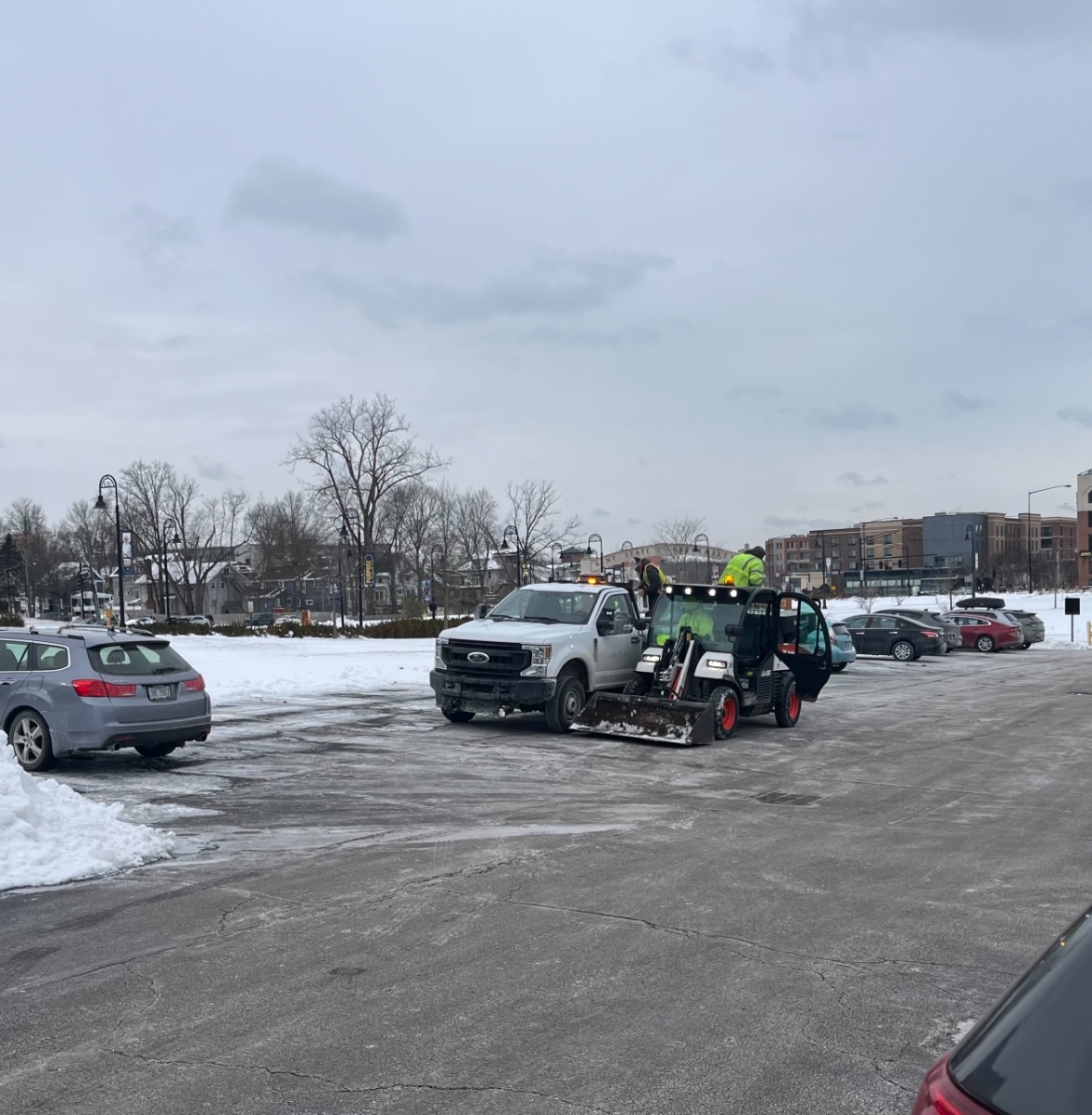Despite an average winter, Kent State had to buy 50% more salt this year. Ice has become an increasing issue for the university grounds crew.
At the helm of this operation is Rebekkah Berryhill, Kent State University grounds manager, overseeing a team of nearly 40 employees to keep the university clear and accessible during the harsh winter months.
Maintaining campus grounds during winter is not an easy task. On an average day, Berryhill’s team typically deploys on a 6 a.m. to 2:30 p.m. schedule. However, “The world doesn’t work that way,” Berryhill said. Winter storms often change their schedules, requiring early starts and long hours to stay ahead of the storms.
Preparation for winter weather begins before the first snowflake falls. Berryhill consults with supervisors, the police station and parking services, using multiple weather services to forecast and plan accordingly. When ice is expected, they pretreat the roads with a 23% salt brine to prevent hazardous conditions.
To balance environmental responsibility with safety, the university reduced its salt usage over the years. In 2019, they used approximately 1,200 tons of salt, but in recent years the university brought that number down to 800 tons. However, this winter’s storms forced the university to order an additional 400 tons, bringing them back to 1,200 tons.
A major issue is not salt availability but transportation.
“Several communities ran out of salt this year, not because the mines didn’t have it, but because they couldn’t get it delivered,” Berryhill says.
Kent State has managed to avoid such a crisis due to its partnerships with the City of Kent and Franklin Township, ensuring they have backup options if supplies run low.
Another issue Berryhill faced is the size of her team.
“Most of the time we are coming in 11, 12 o’clock at night, you know, depending on the circumstance,” she said.
Equipment reliability is another major concern. While the university has invested in tools such as Bobcats and Toolcats, small vehicles designed for snow removal, some of their larger trucks date back to 2007.
These aging machines, essential for maintaining the campus, require frequent repairs due to the heavy wear and tear of plowing. Government regulations for operating heavy machinery for long periods also come into effect by shrinking the already small staff.
“When it is super icy out, my walk from my apartment to Crawford hall doubles,” said sophomore business major Ben Wilcox. “I am only walking to the business building, but that ice adds a lot of time to my walk.”
Berryhill encouraged students and staff to do their part.
“Check the weather and be prepared,” Berryhill said. “Wear appropriate footwear, use priority walkways like the Esplanade and give yourself extra time to get to class safely.”
Berryhill also stressed the importance of simple gestures.
“If you see a groundskeeper out there, realize they’ve probably been working since midnight,” Berryhill said. “A thank you goes a long way.”
Despite the challenges, Berryhill and her team remain committed to ensuring the campus remains as safe and accessible as possible. With lots of planning, hardworking staff and community cooperation, they continue to battle the snow and ice to make sure the campus stays open.
David Williams is a reporter. Contact him at [email protected].



